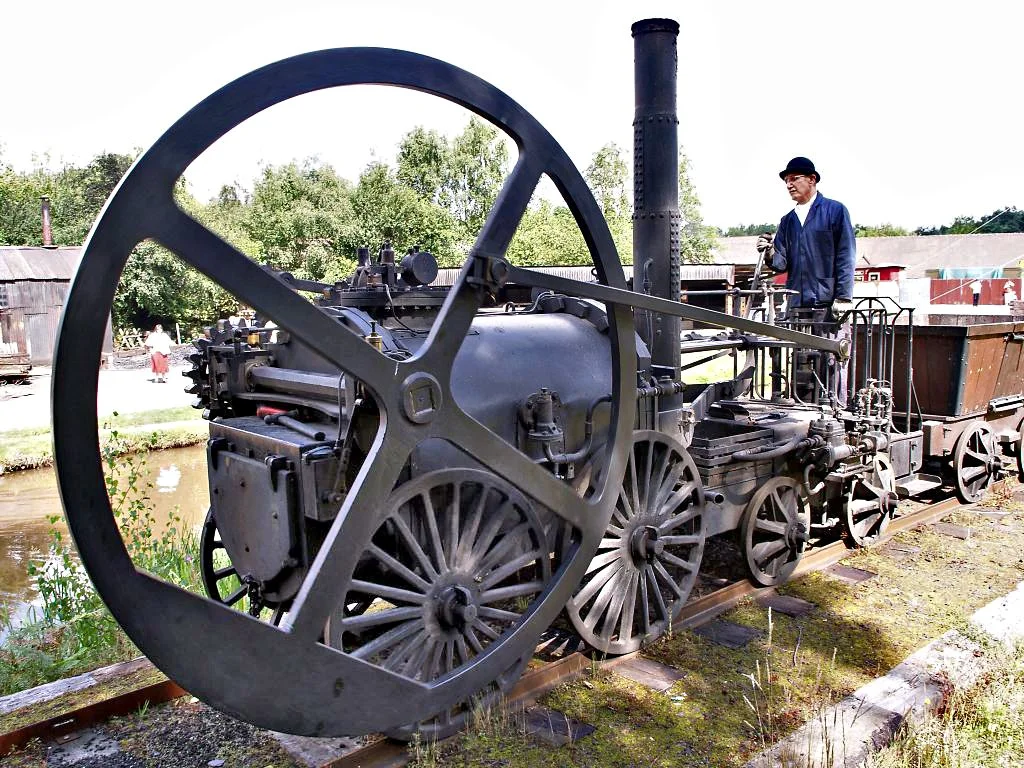The Flywheel Effect for Small Businesses (#173)
A flywheel is a mechanical device which uses the conservation of angular momentum to store rotational energy. A flywheel needs significant force to start spinning, but once spinning at high speed and building momentum will begin storing energy and continuing to turn by itself. Flywheels come in different shapes and sizes. Since rotating objects generate kinetic energy based on the distribution of their mass (moment of inertia) and how fast they rotate (angular velocity), those flywheels with larger diameters and heavier wheels will store more energy than smaller and lighter wheels. You too may own a flywheel — most gasoline powered automobiles have a flywheel which helps to smooth out the energy created by the combustion and helps provide energy for the compression stroke of the pistons.
A flywheel on a steam powered locomotive
Jim Collins, in his book Good to Great coined the term “flywheel effect” to describe the cumulative process — step by step, day after day, disciplined choice after disciplined choice — that added up over time and transformed a good company into a great one. The flywheel effect wasn’t instantaneous; for each of the eleven companies that Collins highlighted some took two years for the transformation and others as many as 11 years. It takes a lot of work to generate the flywheel effect.
Vanguard Example
In a very simplistic view of their business, Vanguard is one of the biggest investment firms in the world with $7 Trillion under management. It’s flywheel starts with offering lower-cost mutual funds (they are the world’s largest provider of mutual funds). Lower-cost mutual funds deliver superior long-term results for clients. Superior long-term results help to build extremely strong client loyalty. Strong loyalty increases the total assets under management. Increased assets under management help to generate economies of scale. And finally, economies of scale lower the costs of the mutual funds.
Each flywheel component isn’t merely a “next action step on the list” but almost an inevitable consequence of the step that came before. If you get the first one right, you are propelled into the next component, and the next, and the next, and the next, almost like a chain reaction. That is the power of an efficient flywheel.
Small Businesses and the Flywheel Effect
If you are a small business owner/entrepreneur, it is a fun, seven-step exercise to think about your flywheel, especially if you haven’t done it before. Gather your team and:
Create a list of replicable successes your company has accomplished in the last 24 months. This should include both new initiatives, as well as your offerings that continue to perform.
Build a list of failures and disappointments. This should include offerings that have failed outright or didn’t quite meet expectations.
Compare the successes and the disappointments. Then ask, “What do each of these tell us about the possible components of our flywheel?”
Using the components you’ve identified (keeping it to four to six), sketch the flywheel. Where does it start? What follows next? And next after that? You should be able to explain why each component follows from the previous component.
If you have more than six components, you’re making it too complicated. Simplicity is the essence of the flywheel.
Test the flywheel against your list of successes and disappointments. Does your empirical experience validate it? Tweak the diagram until you can explain your biggest replicable successes as outcomes arising directly from the flywheel and your biggest disappointments as failures to execute or adhere to the flywheel.
Measure your 2022 performance against the flywheel model.
As Collins says, you don’t need to reinvent the wheel for your business — “A flywheel need not be entirely unique. Two successful organizations can have similar flywheels. What matters most is how well you understand your flywheel and how well you execute on each component over a long series of iterations.”’
The second part of the exercise is to think through how you keep the flywheel spinning? What needs to be kept as is in 2022? What needs to be improved next year? What needs to be created in 2022? And what needs to be discarded?
Conclusion
Whether you work in a big company or a small one, it is useful to use Jim Collins concept of the flywheel effect to go on the offense in 2022 and enhance your organization’s flywheel.

